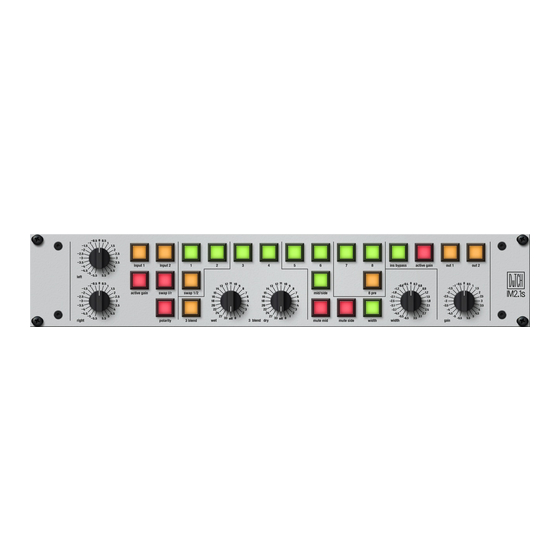DUTCH IM2.1s Podręcznik - Strona 3
Przeglądaj online lub pobierz pdf Podręcznik dla Sprzęt nagrywający DUTCH IM2.1s. DUTCH IM2.1s 7 stron.

Operation:
Inputs:
Input 1 / input 2:
You can choose between the 2 inputs by
pushing the corresponding button. It's also
possible to use both inputs at the same time,
but keep in mind that this could cause some
impedance changes.
Swap L/R:
When you engage the 'swap l/r' button the left
and right channel will be swapped in order.
Sometimes this will bring things to the surface
that you didn't notice before because of the
new listening approach.
Polarity:
The 'polarity' button will swap the polarity of
both Left and Right. Sometimes swapping
polarity will give a better response, mostly in the low frequencies. In most cases swapping
polarity is not needed, but in the cases where you want to, this button comes in very handy.
Keep in mind that obviously this only works with balanced signals.
Active gain:
Both inputs are passive with just relays, but by pushing the 'active gain' button you will
enable the active gain stage which enables you to change the input gain to your liking. In
the mid/0 position, there is no gain applied though it passes the active gain circuit. You can
change the gain in 23x0.5dB steps from +5.5dB to -5.5dB with stepped switches.
Inserts:
Insert 1 and 2:
This is a 100% passive insert section with just relays. When disabled, it will directly pass
the signal internally to the next stage. When you enable the insert (1 and/or 2), it will pass
the signal to the corresponding send/return. It will first pass insert 1 and then it goes into
insert 2. When you push the 'swap 1 /2' button, it will swap the order of the inserts. So
instead of 1>2 the order will become 2>1.
Insert 3 (blend):
Insert 3 has an active parallel/blend function. With
insert 3 you can blend the dry and wet signal
together. Most parallel processing uses one control
for blending from wet to dry and uses a potmeter.
The IM2.1(s) uses two separate controls for wet and
dry with stepped switches instead of a potmeter.
This way you don't have channel imbalance, easy
recall and way better control over what happens to
the signal. For instance you can choose to compress the signal and blend in just a bit of dry
signal. But you also choose to use the dry signal and blend in a bit of quite aggressive
compression. The first steps on the stepped attenuators have 1 dB per step and the last
steps have more course steps, the lowest step is -33dB. The off position mutes the wet or
dry signal.
